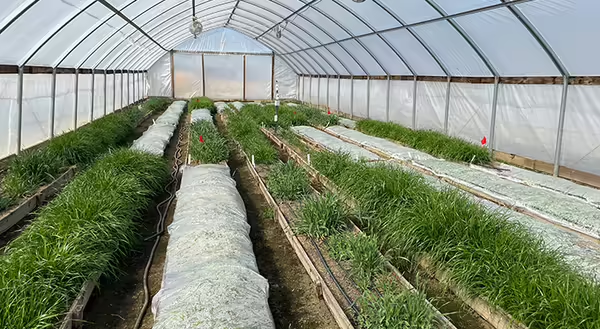
Vegetable transplants are growing well in the greenhouse and should be ready for planting within our high tunnels in the next 2 to 3 weeks. Peaches are in bloom and the summer apple variety in my front yard was at tight cluster. In partnership with our local high school FFA clubs, we hosted another successful year of horticulture and ag business management contests, giving the students an opportunity to see ongoing applied research projects on site.
On February 27, we covered half of the cover crop plots within our high tunnel with clear 2 ml plastic to begin the solarization process for terminating the cover crops. The other half of the plots will be terminated using the mechanical method of weed eating once the crops show signs of flowering. The cover crops planted in the plots include annual ryegrass/crimson clover, annual ryegrass/Austrian winter peas, spring oats/crimson clover, and spring oats/Austrian winter peas. The spring oats never did winter kill this year. We did not get a good stand of crimson clover, but the few plants in the uncovered plots are beginning to flower as of March 25, which is the same timeline as last year. Hopefully, the annual ryegrass and spring oats will begin to show signs of flowering within the next week to keep us on track for setting out tomato and pepper transplants by April 10 at the latest. If the plants haven’t reached the physiological stage of reproduction (flowering) at the time of termination, the risk of cover crop regrowth is higher.
After one month of being covered in clear plastic, most of the annual ryegrass appears to be “cooked” but the spring oats are proving to be tougher, with a fair amount of green still present. The few areas with crimson clover still appear to be quite green under the plastic. Currently, our plan is to remove the plastic next week and do an assessment of insects present in all plots and do a rating of termination effectiveness via solarization.
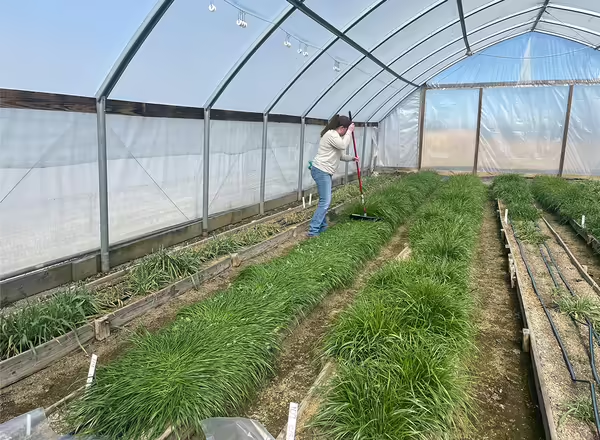
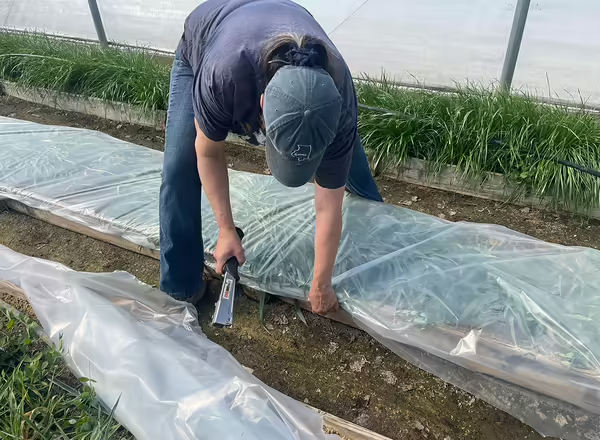
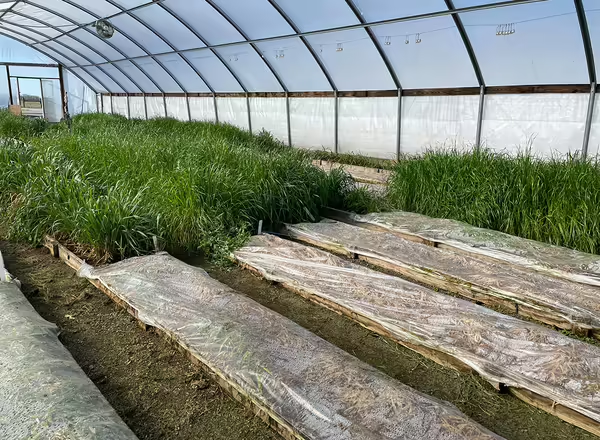
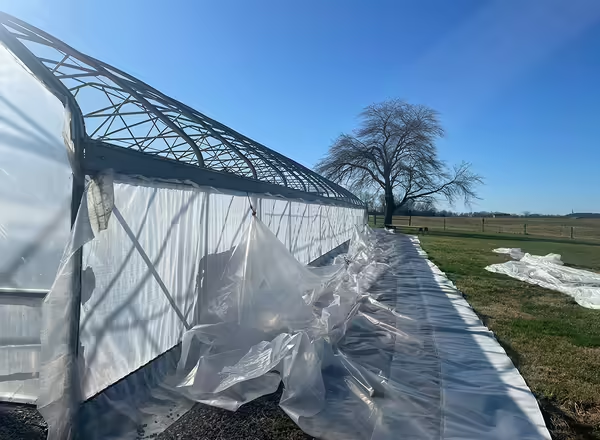
Over the weekend of March 15, our region experienced strong storms that caused structural damage in several areas. The plastic on one of our high tunnels was ripped off during this event and fortunately there was no damage to the frame or the other tunnels on site. This plastic was already scheduled to be replaced this year as it was 11 years old and the original plastic from when the tunnel was first put up in 2014. It was amazing that the plastic had held up so long as normal life expectancy is usually 3 to 4 years. We were lucky to have a 4-hour window with no wind on March 17 and had the tunnel reskinned within 2 hours. Already having the roll of plastic on hand allowed us to capitalize on the calm weather as the wind has been blowing non-stop for the past week and a half.